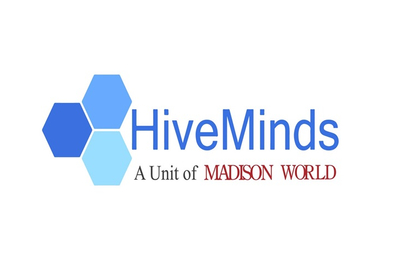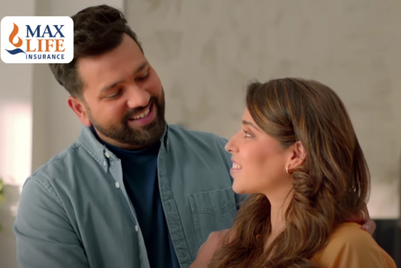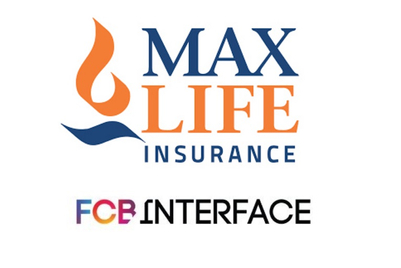
Do Baby Boomers, born between 1946 and 1964, or broadly those aged 50 to 70 years, present a large opportunity in India? If yes, for which segments? Are Indian brands alive to this opportunity?
Madhukar Sabnavis, VC and country head - discovery and planning, O&M India (MS):
Yes, I think they present a big value opportunity. I belong to that age group and believe that I am still a prospect for many products from homes to consumer durables to personal accessories and cars. I don’t think too many brands are consciously aiming at them except Big FM which has content aimed at the older audience with older music! Marketers have stretched target audience to 35-45 for premium products but not much beyond that - because of the buzz about youth and young India. I don’t know the actual numbers but if we were to spread the 1.2 billion Indians, while the larger chunk is under 35 there are still significant numbers in the age groups above that!
Anisha Motwani, Director and CMO, Max Life Insurance (AM): Close to 50 per cent of us are below 25 years of age and a mere 12 per cent qualify in the baby boomer category. We are set to don the youngest country in the world title by 2020 but our youth dependency ratio is 44 per cent. On the contrary, the elderly dependency ratio is mere eight per cent and this would tell you that our geriatric population wields a significant economic clout. For starters, this group appears to have a monoply over family real estate asset holdings marking their (high) net worth status and potential for finance advantages. The number of seniors in the SEC A, B amounts to nine million, thus, representing a market larger than UAE and close to the size of Sweden. This segment has changed and morphed into a large business opportunity. World over, baby boomers are darlings and doyens of medical and healthcare services, pension and annuity plans. They are also heavy consumers of travel, tourism and vacation services. Unfortunately, the opportunity has not been tapped in to aggressively here.
We do see brands targeting the elderly segment across a range of industries. There is the ‘rare’ innovation like mobile devices with larger screens and bigger buttons for ease of use called ‘Asaan’ from iBall mobiles. NTT DoCoMo Japan, tasted success when it launched ‘easy-easy’ or Raku-Raku featuring a panel with larger buttons and easier to read numbers. In less than two months, the model sold more than 200K units.
Closer home, the hair colour category has targeted older audience. Similarly, personal care (hair regrowth) category has seen traction with use of contemporary personalities like – Shane Warne, Gautam Gambhir etc. Syed Kirmani endorses hearing aids to senior citizens. Short haul cruise vacation services and destination management (in Asia) has been a success at targeting older holiday makers. The key insight that while travelling abroad seniors prefer covering fewer cities as opposed to hectic tours designed for younger people, has encouraged more seniors to travel abroad nowadays.
Is the youth demographic a more ‘low hanging fruit’ that takes away brands’ focus – perhaps even rightfully so – from the elderly TG?
MS: It is not the low hanging fruit but more the more salient fruit. I remember a radio station I worked on being very excited creating content for the 18-25 year olds but when it came to actually writing target audience definition, stretched it to 18-35 simply because it said the spending power was in the older group! Pushing the age group even further was only a mental block and not a reality because spending power increases with age. But it just doesn’t sound right to say we are going after an older audience.
AM: It is quite natural for brands to base their planning around our demographic pyramid and chase the largest segment (25-54) that comprises 40 per cent of the total population pie. However, many seniors today are wealthier than those in the past. With better living conditions, improved diet and healthcare facilities seniors are more energetic than ever before. Sixty is truly the new 50! Elderly TG can be viewed as a low hanging fruit for brands that are willing to understand the needs of this demographic and are inclined to invest in this market opportunity. Like the West, our life insurance, healthcare, medical services industry is uniquely positioned to address this high potential base.
Is this (elderly) segment being targeted well enough? And consistently enough?
MS: I have never, maybe more rarely, seen a brand say its target audience is over 40 years old. So clearly, no one consciously targets it and the normal belief is that it is a consumption audience and it will consume if you do young messaging!
AM: This remains an underpenetrated segment. Given the significant opportunity that exists in the 25-54 years age group, it is natural that Indian marketers focus on that segment. However, as product categories mature, marketers try to find their niche. Here, 50-70 years audience could be a high potential segment with its unique needs. Indian marketers need to invest more on research to understand this segment and create relevant product and service offerings for them. There is a large population of entrepreneurs, professionals and private sector employees who have enjoyed the benefits of economic liberalisation of the early 1990’s and now on verge of entering this age group. This group has high disposable income and could be an attractive customer segment. For life insurance, this could be an attractive segment for immediate annuity plans.
Is traditional mass media advertising relatively more effective in targeting this demographic? What other channels could work well?
MS: That depends on the product and category and the audience you are going after. We must remember many of the people who you are talking about grew and bloomed in the 90s at work and reaped the benefits of liberalisation. Many of them could still be conservative in thinking and more risk averse than the younger counterparts but certainly are not without spending power or desires of good life. Maybe the less consciously promoted products such as elite clubs in hotels target them smartly.
AM: Using large format media vehicles to speak with the baby boomer segment will result in unnecessary spillover and media wastages. Instead, the media mix has to be custom-configured to ensure a sharp delivery by using specific print media publications and magazines to effectively resonate with the higher age group consumer. Interest-specific media properties (health, wellness, lifestyle, medical, travel, news, devotional , spiritual) can be utilised in the electronic media space.
A robust media mix would also feature direct marketing campaigns reaching out to the baby boomers in their natural surroundings and habitat – parks, community centers, recreation clubs. The space is ripe for creating and thereby owning large communities of baby boomers. These communities can be started online in the social media space over Facebook or by offline channels. The communities are a potential ‘marketplace’ for collating brands, offerings and its consumers.
Should messaging for the elderly TG be specially created?
MS: Why not- if we can do it for men and women and teenagers and the youth (18-35 year olds)!
AM: Any communication has to centre around the audience, their social and physical needs and motivations. There is a need for customising the messaging and creative environment. We have to bear in mind that senior citizens are very smart! They drive a hard bargain and look for value-for-money offerings coupled with long-lasting quality and service commitment.
Seniors are also not as hung up on brands as younger people, and are not looking at image or the emotional component of brands. To them, brands provide a reassurance of quality and a responsible organisation that will address any issues that they may have vis-a-vis product/service issues. More than brands, seniors are likely to look at corporate reputation to assess the company for honesty, fairness, financial stability etc. All elements of the communication, its tonality, and its creative language therefore has to take reasonable account of all these messaging ingredients and designed appropriately.
The convenience of e-commerce should be a reason for the elderly to use the channel. Have they been educated and incentivised enough to shop online?
MS: Why only e-commerce, even modern retail is a place they go to. I find it fascinating that many fashion brands tend to think of youth as audience when they can buy just T-shirts and shorts during sales while the older can actually buy the brand. Many don’t even cater to the older body shapes and styles, and are missing a trick.
AM: This remains a key opportunity area and a challenge area for brands to translate financial capital of the baby boomer into online monetised opportunities. Consider this – less than five per cent Indian netizens are 55-64 years old whereas 75 per cent internet users in India are 35 years or below (ComScore India 2013, Future in Focus). As a first step, we have to consciously bring baby boomers to the online universe before we can talk e-commerce with this group. If we can get a baby boomer to sample matrimonial services online, we should be able to onboard them for a variety of other services too.
(Published in the issue of Campaign India dated 11 July 2014.)


.jpg&h=334&w=500&q=100&v=20250320&c=1)
.jpg&h=334&w=500&q=100&v=20250320&c=1)

.jpg&h=334&w=500&q=100&v=20250320&c=1)


.jpg&h=334&w=500&q=100&v=20250320&c=1)


.jpg&h=334&w=500&q=100&v=20250320&c=1)





.jpg&h=268&w=401&q=100&v=20250320&c=1)


